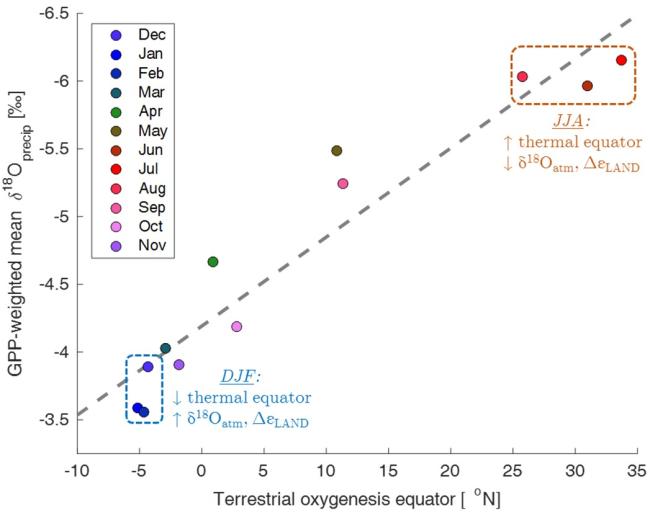Ice-core evidence for southward shifts of tropical rainfall in response to iceberg discharge during the last glacial period
Heinrich events – abrupt periods of substantial iceberg discharge from the Northern Hemisphere ice sheets – occurred repeatedly throughout the last glacial period and had pronounced global effects on climate. Paleoclimate records from ice cores, marine sediment cores, and speleothems (stalagmites and stalactites) have demonstrated that abrupt Northern Hemisphere cooling and Southern Hemisphere warming occurred in response to Heinrich events. Based on various paleoclimate proxies and model results, it has been suggested that the input of freshwater into the North Atlantic following these events led to slowdowns of the Atlantic meridional overturning circulation (AMOC) and reductions of its considerable northward cross-equatorial heat transport. Individual records from caves and other paleo-hydroclimate proxies have implied that simultaneous drying of the Northern tropics and wetting of the Southern tropics followed Heinrich events, consistent with southward shifts of the tropical rain belts and the thermal equator.

Whereas individual local paleohydrological records may be limited in their ability to represent large-scale climate responses to Heinrich events, ice core air bubbles contain globally integrated signals of climate change, since the atmosphere is well mixed on an annual timescale. In their 2015 Science paper, Rhodes et al. presented an ice core methane record of unprecedented resolution, which showed rapid emissions of methane in response to Heinrich events. The authors hypothesized that these atmospheric methane spikes were recording stimulations of the southern tropical wetlands due to southward shifts of tropical rainfall.
Now in a Climate of the Past paper, Seltzer et al. present a new record of oxygen isotopes in atmospheric O2 derived from two Antarctic ice cores. The authors outline a simple mechanism by which the ratio of oxygen-18 to oxygen-16 tracks the median latitude of terrestrial oxygen production. Using modern spatiotemporal records of oxygen production and oxygen isotopes in terrestrial precipitation, the authors demonstrate that their proposed relationship is robust over the modern seasonal cycle. Because plants are sensitive to temperature and precipitation, shifts in the thermal equator and land extension of the intertropical convergence zone affect terrestrial photosynthesis and, therefore, the oxygen isotopes of atmospheric O2.
The most extreme increases in the oxygen 18-to-16 ratio over the last fifty thousand years in this study’s deconvolved record occur immediately after Heinrich events, consistent with the authors’ proposed relationship and strongly suggesting that tropical rainfall shifted south in response to Heinrich events. This finding supports the Rhodes et al. hypothesis that increased rainfall in the southern tropics likely stimulated wetland methane emissions in response to massive iceberg discharge events during the last glacial period.
Does δ18O of O2 record meridional shifts in tropical rainfall? (Climate of the Past)
1Scripps Institution of Oceanography, University of California-San Diego
2Oregon State University
3University of Bern, Switzerland
4Seoul National University, South Korea
Topics
- Paleo
- Water Cycle
- Weather
- Climate Change
- Ice Sheet
